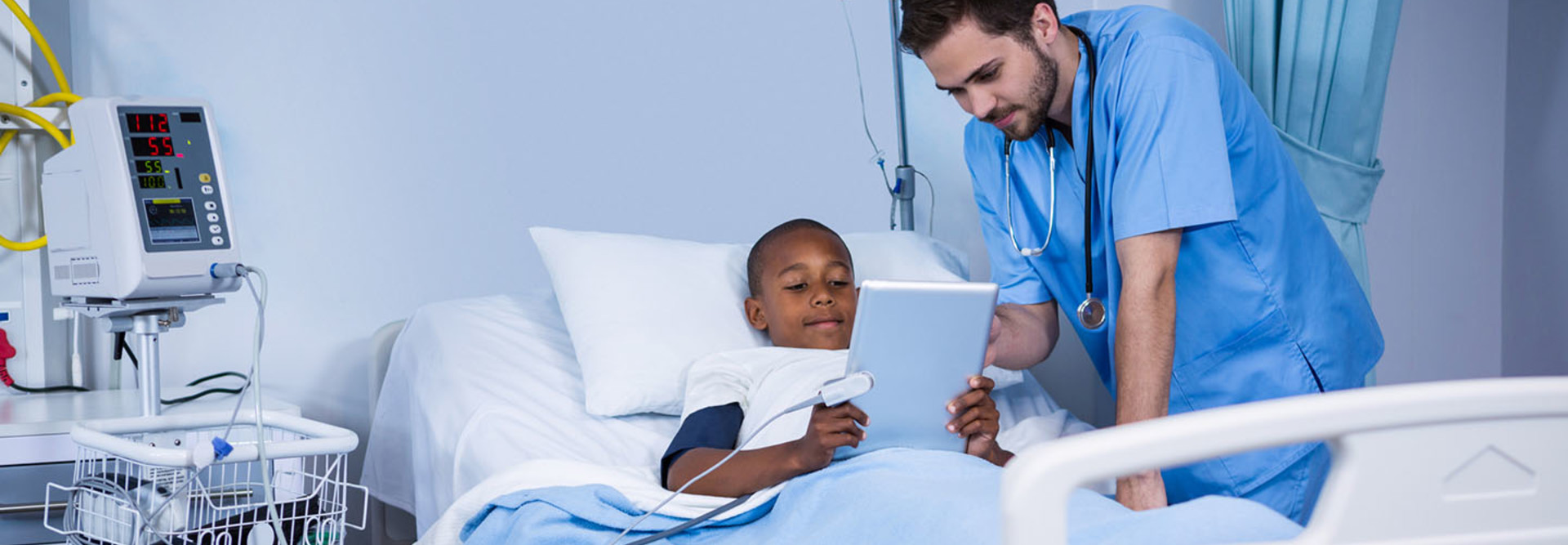Phoenix Children's Hospital Boosts Patient Satisfaction with Centrally-Managed iPads
In healthcare, tech innovation often happens behind the scenes. But, for the innovative Phoenix Children’s Hospital, an initiative to introduce a tablet to every patient room became a very visible project that quickly skyrocketed both patient and clinician satisfaction.
The project placed 400 Apple iPads in patient rooms over the course of three years, thanks to funds from the James M. Cox Foundation. It has been wildly successful in easing hospital stays for children, their families and even the day-to-day for hospital staff.
“We’re really reconnecting the patient back to the electronic consciousness that they have both inside the hospital — all the lab results and all the medical information — but we’re connecting them back to their social environment,” says David Higginson, executive vice president and CIO at Phoenix Children’s Hospital. He noted that, these days, social media is a key component of a child’s life, and taking away a connection to the internet can often make a stay just that much more difficult. “When you’re in a hospital with a difficult disease, often having that connection back to your social environment is really, really important,” he adds.
SIGN UP: Get more news from the HealthTech newsletter in your inbox every two weeks!
iPads Offer Entertainment, Education to Children and Families
The devices offer entertainment and distraction for patients, which makes their stay a lot less of a struggle and, in turn, makes the clinician’s experience smoother sailing.
“The nurses really like if the child is happy. [It] makes their lives a lot easier, same for the physicians,” says Higginson.
Aside from entertainment, the iPads are also a key way to deliver educational materials, often on a better timeline for patients and their families than more traditional methods.
“If a family is learning about a new disease for the first time, in the old days we’d wheel our video cart or DVD player [into the room], they’d watch the movie once, and we’d wheel it somewhere else,” says Higginson. “What we’ve heard from [families is that they] want to hear that video over and over again. People are ready to hear things at different times.”
The iPads provide families with the freedom to watch and absorb the educational material at their convenience.
The program has been so successful, in fact, that the hospital is now deploying iPads in their outpatient clinics as well. “People come in for chemotherapy, dialysis, plasma infusions, they’re sitting around for hours. So, they want to use them in the clinic, too. They don’t want to be stuck there sitting on a chair for four hours with nothing to do,” says Higginson.
VMware Tackles Device Security, Management Challenges
Having an already busy staff deploy 400 iPads to a range of constantly rotating patients was not an easy task, however, and Phoenix Children’s Hospital experienced social and technical challenges.
“Socially, with a child in the room, what if a family came in and they didn’t want the child using a tablet? Or, maybe it was a 3-year-old, and it wasn’t appropriate for them,” says Higginson.
The answer came in the form of personalized profiles, which configure the device automatically to provide content that is suitable for the age of the patient. Similarly, the devices automatically configure to the language the patient speaks.
“Those things ease [patients] into the transition, so someone who wasn’t familiar with a tablet could get to grips with it right away,” says Higginson.
The hospital couldn’t ask busy staff members to make these changes, however, so the IT team had to work out ways to manage the devices centrally and without too much staff involvement. VMware helped the hospital make that need a reality.
“Our goal was not to have people running around controlling the device. We just wanted to have the devices ready when people came in the room, be age appropriate, be safe and secure — the last thing we want is a child being exposed to something they shouldn’t be inside our hospital,” says Higginson. “VMware allowed us to kind of put that security wrapper around the device, make sure the right content was delivered at the right time and, also, stop maybe the older child trying to poke their way into other things in the hospital they maybe shouldn’t be doing.”
Now, with the hardware in place, the hospital is turning its eye toward software that can help to further ease the patient experience, streamlining and customizing everything from food ordering to interacting with electronic health records. All of this takes the hospital experience just one step closer to making a hospital stay as painless as possible.
“In a children’s hospital … I can’t cure the child, I can’t change the disease, but I can make their day just a little bit better,” says Higginson.








